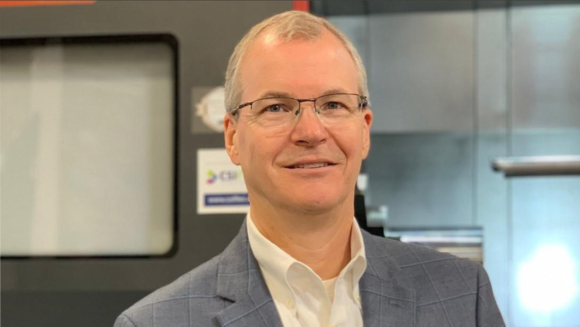Do you know what is really going on with your machines? Have you actually listened to them lately?
Today’s guest on Swarfcast is Jeff Rizzie, Director of Digital Enablement at Sandvik Coromant.
Sandvik is renown for its cutting tools, but the company has branched out into selling cloud-based machine monitoring software called CoroPlus Machining Insights. Machining Insights measures the overall equipment effectiveness, or OEE, of a factory’s machines, collecting data such as spindle speeds, axis feed rates, and spindle override frequency. Rizzie estimates that 90% of shops who have used Machining Insights believed their OEE was significantly higher than what it was in reality.
Facebook: https://lnkd.in/dB_nzFzt
Instagram: https://lnkd.in/dcxjzVyw
Twitter: https://lnkd.in/dDyT-c9h
Main Points
Machine Monitoring collects data through an ethernet connection with machines. It shows all data collected since the machine was connected, from the standpoint of the machine, the components being produced, as well as the cutting tools on the machine. The system takes metrics such as spindle speeds, axes feed rates, load meters, machine alarms, and position of feed rate override switches. It also tracks when the machine in Automatic mode, MDI mode, or when it is executing programs.
Rizzie says shops often estimate that they are in the 60%-75% range of OEE, but then CoroPlus reveals they are actually in the 30% range or even lower.
The standards for OEE in shops changes depending on the type of components the shop makes. A shop doing high volume automotive parts needs to have a much higher OEE to be profitable than a shop doing lower volume parts. Rizzie says the highest OEE he has seen was at an automotive shop in mid-80% range.
Rizzie says that often when a shop has low OEE it’s because little problems on a lot of machines add up. Often operators are not getting peak performance from machine tools because they are hacking through errors created by underlying problems in the equipment. One possible cause of this scenario is that operators are under such pressure to make parts fast that they don’t take the time to stop machines to address the roots of problems.
When Monitoring Insights shows feed rate override switches being used frequently it’s important to examine why. Operators might be slowing down machines to stop chatter, rather than correcting the underlying cause of it. Maybe the machine’s firmware needs to be updated. Maybe the program has a glitch. Maybe the machine is dirty. If these simple problems can be identified and dealt with properly, a company can save huge money.
Rather than leave customers on their own to interpret the data and come up with their own solutions, Sandvik offers consulting services. They advise the company on technical issues as well as lean management.
Question: What’s the strangest problem you have seen with a machine?
Podcast: Play in new window | Download





3 Comments
for those of us who might be interested, can you tell us how this monitoring works and how much it costs.
Hi Al, that’s a great question. That stuff is interesting. All that info is actually in the podcast interview.
I debated on putting it in on the blog, but I just figured it would be better for people to contact them. I don’t want to state anything wrong, and this is not an ad for Sandvik😃
This response is somewhat off-topic.
To be honest, I have never understood why machine shop owners do not maintain their machine tools in a way that will insure productivity, precision and reliability.
I purchase exclusively machine tools from from a japanese manufacturer that has a reputation for productivity, precision and reliability. Because of this, my shop is competitive with with Taiwanese prices if shipping costs and delivery times are included. These machine tools – when maintained to factory recommendations- have a useful service life of 25-30 years and will maintain tenths-level precision while machining tool steel if not abused, all while repaying their purchase price every year.
Furthermore, these profit-generating assets hold fairly high resale values if you can find them on the used market.
Please explain to me – and I really want to understand the financial and operational logic behind this – the local service manager routinely tells me that “we don’t have many service parts in stock because everyone runs that (choose any possible subsystem on a machine tool) to failure” or “nobody complains about the service manual because most people run them into the ground”.
Thank you for your insight.